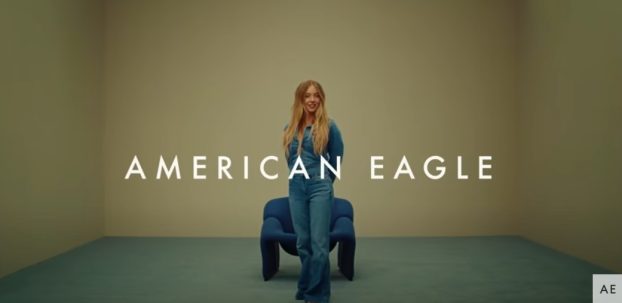April 2, 1984 – TSN The Sports Network is granted a licence by the Canadian Radio-television and Telecommunications Commission to operate Canada’s first and only 24-hour-a-day, all-sports discretionary television service.
Gerry Tymon, vice-president and general manager of The Rep Shoppe, the company that sells advertising on tsn, says in order to understand the impact that tsn and the other specialty services have had on the television environment, it is important to understand what the broadcast world was like a decade ago.
‘A finite world’
‘Up until Sept ’84, it really was a pretty finite world in terms of the choice that the advertisers were faced with,’ Tymon says.
‘You had two major networks, you had an affiliate in every market of any size, and you had the emergence of some independents in the major markets,’ he says.
‘From the viewer’s point of view, their experience and their whole focus was on the television that they had grown up with, which ranged from channel two to channel 13.’
Unimpaired delivery
(Tymon says cable had evolved as a means for viewers to have unimpaired delivery of local signals in major markets and distant u.s. signals, and suggested viewers were looking for other viewing choices, over and above what they could get with ‘rabbit ears’ or their television aerial.)
‘Now, for the advertiser, the fact that there was this finite number of stations was good news, because it concentrated the numbers of people among very few viewing options – they could reach more people more often, and have a significant amount of impact without really having to blow their brains out from a budget point-of-view,’Tymon says.
‘It was a very simple world,’ he says.
It was into this world that tsn and MuchMusic were delivered.
Tymon says from an advertising point-of-view, the concept of specialty services took some getting used to because it resembled nothing agency media planners and buyers had worked with before.
First, he says, they were national networks, which tended to suggest they were not concentrated in any one market which might be of interest to the advertiser.
As well, they had – relative to historical audience delivery – small numbers for television.
And, finally, they were discretionary, which meant that the viewer had to call his or her cable company, ask to get the service, and be willing to pay for it.
Says Tymon: ‘It was not unusual in those first years to have to explain to an advertiser and/or their agency that there were advertising opportunities on the specialty channels – it just wasn’t part of their experience.’
Added to all of this was the fact that, at many agencies, buying the specialty services was assigned to more junior staff who had no first-hand experience with pay tv.
‘The lifestyle of a junior, making $9,500 a year, allowed them to eat, have a bachelor apartment, pay their subway tokens, and work 17 hours a day,’ Tymon says.
‘It probably didn’t allow them to have cable, and if they did have cable, they probably didn’t have a converter, and if they did have a converter, they probably weren’t tsn subscribers,’ he says.
‘It would be like me trying to sell you on 3D television – if you’ve never seen it, you have no idea what I’m talking about.
‘So, that was tough.’
Still, in the months leading up to the launch, a small but dedicated group of advertisers, including Labatt, Gillette, Molson Breweries, Procter & Gamble and General Motors, committed funds to what they believed was a viable concept.
Jim Shepherd, director of client services for tsn, says:
‘They had seen the success of espn [a national, all-sports service in the u.s.] over five years, and decided it was high time there was an all-sports network in Canada.’
Aug. 2, 1984 – tsn signs its first on-air commentator, Jim Van Horne.
Aug. 26, 1984 – tsn signs a three-year deal with the Canadian Interuniversity Athletic Union (ciau) to carry almost 50 events annually.
Sept. 1, 1984 – tsn goes to air.
Subscribers to the new pay tv service total 323,000.
Programming on the first day includes a game from the 1984 Canada Cup hockey tournament, a Toronto Blue Jays game and the first SportsDesk, tsn’s sports news program.
‘Not even close’
While the programming was certainly all-sports, ‘it wasn’t even close to what you see now,’ Shepherd says.
‘You can imagine, in the early days, with not even hockey to begin with, there was an awful lot of darts and bowling on the network,’ he says.
‘We never had any major league play-offs. We had 25 Blue Jays games, 25 Expos games, that was about it.
‘Better assortment’
‘Now our program lineup is better than espn, we have a better assortment of top, first-tier product than they do.’
Tymon agrees that in those first few years, a considerable part of the schedule was taken up with more obscure pastimes. But he doesn’t apologize for it.
‘Darts has always been the one that everyone throws at us,’ he says. But those programs are still there.
‘We’ve had darts, we’ve had tractor pulls, we’ve had equestrian [events,] and we will continue to have them because there is a segment of the sports audience that wants to see things they can’t see anywhere else.’
Exciting
Although Tymon did not start selling for tsn until 1985, through Telemedia Broadcast Sales (Tymon moved to The Rep Shoppe in 1991 when tsn decided to set up its own advertising sales company), he says those first few years were exciting.
‘It was almost evangelistic,’he says.
‘You had a story that most people in their daily lives didn’t want to hear about. You’re selling a concept they weren’t familiar with, that they probably never watched, because they weren’t subscribers.’
‘You were selling in ways they weren’t used to seeing.
‘Had to differentiate
yourself’
‘You had to differentiate yourself as a service. You had to differentiate yourself from the comfortable relationship advertisers already had with conventional television.’
‘In conventional tv, with the high demand for television advertising, it was really a business of inventory control,’ Tymon says.
‘We didn’t have that problem,’ he says.
‘So, you were trying to find good reasons for them to spend money on your television network, as opposed to simply negotiate how much they would pay for a certain ratio of inventory.’
‘It was exciting because we started to introduce information about the qualitative aspects of audiences, which until that point wasn’t required for television, because the advertiser and the agency knew that television was a mass medium, knew that you could reach a significantly higher proportion of the total population by using television, and do it more efficiently than you could with any other medium – so, what’s the problem?
‘To differentiate ourselves, we had to start utilizing qualitiative research about why our viewers were more interesting, or more attractive, or more valuable to a potential advertiser.
‘Television had never had to do that.’
Tymon says in those early years, tsn was sold on the basis of its ability to deliver a core target group more efficiently than having to buy a whole demographic.
Numbers growing
As well, every month, the service was reporting an increase in the number of subscribers, which meant that advertisers who came in with a long-term commitment could expect to see a benefit or bonus when their contracts were executed.
Tymon says, these factors, coupled with the fact that viewers were willing to pay for the service, meant they were probably light viewers and potentially more valuable to advertisers than the average consumer.
‘For a fraction of the money it would cost them to have a campaign on conventional television, they could have a significant share of voice, and a very high profile on tsn, among a core and key group of consumers,’ he says.
Oct. 30, 1984 – tsn carries its first regular-season National Basketball Association contest, featuring the Philadelphia 76ers and the New Jersey Nets.
March 18, 1985 – tsn carries for the first time Toronto Blue Jays Grapefruit League exhibition baseball from Florida.
April 1, 1985 – tsn continues its Grapefruit League exhibition baseball programming from Florida with its first Montreal Expos contest.
Nov. 24, 1985 – tsn airs its first National Hockey League regular season game, featuring the New York Rangers and the New York Islanders.
Tymon says it is about this time that the service begins to achieve ‘critical mass’ in terms of its properties.
‘Programming was the key,’ he says. ‘I would love to take credit for [tsn’s success.]
Interest grew
‘But, as the programming grew, so did the interest in it. And, not only that, the more often you stuck something in somebody’s face in primetime, eventually [something is bound to stick.]’
‘If, for example, you had a 25-game Blue Jays schedule, you have 25 primetime opportunities for someone to tune in.
‘Maybe five or six times they are not home, or not available, and you are still secondary to the network they know best for Saturday afternoon Blue Jay games.
‘As your 25-game Blue Jay schedule goes to 40 games, you have just added 15 more times in primetime you are up against other people.
‘Viewing habit’
Tymon says tsn started getting people used to a ‘viewing habit.
‘People started to think beyond channel 2-11,’ he says.
‘They began to realize that on Saturday mornings, they didn’t have to watch cartoons or religion – they could watch sports.’
Feb. 4, 1986 – tsn broadcasts the 38th NHL All-Star Game from Hartford, Conn.
Tymon says the blockbuster event marked a significant turning point, both in terms of tsn’s appeal to viewers and its profile with advertisers and their agencies.
All-Star Game
‘Suddenly, something called the All-Star Game was going to be on tsn,’ he says.
‘It shook people up because they said, `tsn has darts and tractor pulls, don’t they? I don’t watch it, but I’ve heard. The All-Star Game belongs on conventional television.’ ‘
‘We did the research on it, in terms of what we thought was a reasonable expectation against the universe of households we had.
‘We charged $4,000 [for] a 30-[second commercial] on it, which, relative to our previous programming fare, and the acceptance of the market, was more than twice what we had charged for anything before.
‘We went to the marketplace and said, `Guess what, we’ve got the NHL All-Star game.’
‘They said, `Sure.’ And then we told them how much we were charging for it.’
Tymon says, to their credit, there were people who said right away they would buy it.
Doubters
But, there were just as many who doubted tsn could attract the audience it said it would and refused to pay the money it was asking.
Tymon says the week of the game, tsn was flooded with calls from media buyers who said they had talked to their clients and would take a couple of spots – at a discount.
To the media buyers’ surprise, it was sold out.
Tymon says the All-Star Game accomplished several things.
‘The audiences were achieved, and the revenues were there, and the advertisers were in were comfortable with what they got,’ he says.
‘The average Joe wanted to see the All-Star Game and he had to find somewhere that had tsn. So, that was significant.
‘Equally significant was, and I’m not being vindictive, but the people who dismissed us, who said `They are small-time players, ignore them,’ suddenly had to pay attention.’
May 1986 – tsn carries all 52 games of soccer’s World Cup from Mexico.
Dec. 3, 1986 – McCain Foods collaborates with tsn to produce the first McCain Skins Curling Tournament in Newmarket, Ont.
The cash-per-end bonspiel has since become one of the major competitive events of Canadian curling.
Jan. 15, 1987 – Gordon Craig, then president of tsn, is awarded the Doug Gilbert Media award by the Sports Federation of Canada, as Canadian sportscaster of the Year.
April 20, 1987 – tsn reaches one million subscribers, a number Tymon says has significance because it sounds important.
‘Nine months earlier, we had had nine hundred and some-odd thousand households, he says. ‘It didn’t matter. It was one million that was significant.’
While total advertising volumes were not as great as they are today, Tymon says tsn ‘was on a roll.’
June 25, 1987 – tsn carries its first Canadian Football League game. The Winnipeg Blue Bombers play the Toronto Argonauts.
July 16, 1987 – tsn acquires exclusive pay tv rights to the 1988 Winter Olympics in Calgary. ctv is the official broadcaster.
Much of what tsn covers, Shepherd describes as ‘less high-profile, second-tier events’ that complement ctv’s coverage.
Like the NHL All-Star Game, the Olympics lent credibility to the relatively young network, he says.
December 1987 – tsn gets permission from the crtc to move to basic cable as of Sept. 1, 1989.
In the meantime, cable operators are allowed to move the service to extended basic, meaning consumers will receive the service unless they specify they do not want it.
In the months leading up to the announcement, Tymon says advertising sales start to heat up, in anticipation of larger audiences.
Feb. 13, 1988 – tsn begins 115 hours of coverage of the Calgary Winter Olympics.
May 1988 – tsn’s advertising agency, Ambrose Carr Linton Kelly, launches tsn’s award-winning consumer campaign ‘Real Life. Real Drama. Real TV.’
‘Unlike a lot of traditional broadcasters, tsn actually believed in spending on advertising, in investing in its message,’ Tymon says.
‘Relative to what you might have seen from the marketing efforts of traditional broadcasters, tsn aggressively invested in both going after consumers and the trade,’ he says.
(tsn’s award-winning trade advertising, ‘First Class Male Delivery’, was conceived by Bates Advertising, although further executions were handled by Ambrose Carr.)
‘A lot of advertisers looked on it as a compliment, as a courtesy to them, that tsn wasn’t just asking them to invest their money in 30 seconds,’ Tymon says.
‘They were saying, `We will also invest in making sure the viewers come to the progams you advertise in,’ he says. ‘And, we are prepared to remind you, we want your business, and we have something of value.’
Nov. 12, 1988 – tsn commentators Roger Neilson, Gary Green and Jim Hughson travel to Regina to conduct the first TSN Community Sports Clinic.
The Sports Clinic Program provides free, expert sports instruction to Canadian youth in communities across Canada.
May 16, 1989 – tsn begins broadcasting from Toronto’s SkyDome as the Blue Jays move there from Exhibition Stadium.
Sept. 1, 1989 – Le Reseau des sports (rds), tsn’s French-language counterpart, goes to air in Quebec and Eastern Canada.
‘The introduction of rds made it easier for an advertiser corporately to serve all of their regional requirements, by having a similar vehicle available,’ Tymon says.
‘They could show they were serving all regions equally,’ he says.
Tougher
At the same time, the launch of rds was a little tougher than the launch of tsn, says Tymon, simply because of the competitive media environment in Quebec.
‘It was a market with a significant amount of conventional supply and a lot of supplier competition among conventional networks,’ he says.
‘A new network had to be in line with the marketplace, and the marketplace had an awful lot of supply, not of sports, but of tv in general.’
On the same day, tsn moves to basic cable throughout the country, boosting the number of households getting tsn to more than five million.
According to Tymon, the move coincided with a recognition by many packaged goods marketers that societal changes meant more men were becoming the household’s principal shopper.
‘That was advantageous to us because advertisers were starting to question whether they could simply target the female principle shopper and assume that they could continue to drive their brand share,’ he says.
‘Opportunity to increase share’
‘The principal male shopper became an opportunity to increase brand share in an intensely competitive marketplace for all categories.’
Not only that, says Tymon, but advertisers whose target was adults, split 50% male, 50% female, began to realize their buys on conventional television tended to deliver a larger number of impressions against women – and that they could correct the balance by adding something as focussed as tsn.
Nov. 18, 1989 – tsn renews a five-year agreement with the ciau and for the first time covers the Vanier Cup, the athletic union’s national football championship.
The broadcast marks the 25th anniversary of the event.
Spring 1990 – Blue Jay baseball games are increased to 60 from 40. When combined with 25 Expo games, this gives tsn the majority of broadcast baseball games.
Sept. 21, 1990 – tsn is there when Canada earns its first berth in the world group of Davis Cup tennis with a 3-2 upset of The Netherlands in Toronto.
Jan. 4, 1991 – tsn covers the 1991 World Junior Hockey Championships, in which Canada scores a 3-2 victory over Russia to take the gold medal.
Also in 1991, tsn establishes its client services department to better leverage its sports properties.
‘There are endless things that can be done in connection to live sports, that transcend simple purchase of airtime, and make the involvement with those sports work harder for the advertiser,’ says Shepherd, who was brought in to head the department.
Last summer, for example, Labatt was looking for a way to promote its Labatt Blue product.
The client services department helped organize a contest in which 2.5 million game cards were inserted into boxes of Blue.
If the score on a consumer’s card matched the score during the 7th inning of a Blue Jays game, the viewer could call a 1-800 number for one of nine chances to win a gm car.
The promotion garnered a huge response, with about 4.8 million calls logged over the nine weeks of the promotion.
For S.C. Johnson, Shepherd and his staff were able to extend the client’s pool of commercials for its Edge Shave Gel by creating a series of 60-second vignettes on radical sports like sky diving, mountain biking and whitewater rafting.
The series, entitled Living on the Edge, allowed the client to increase the frequency of its message, without suffering ‘wear-out.’
Shepherd describes his department’s function as adding ‘the sizzle to the steak.’
July 1, 1991 – tsn and rds become founding sponsors of the new Hockey Hall of Fame in Toronto.
March 18, 1991 – tsn’s sports documentary series For the Love of the Game premieres with ‘A White Man’s Game?’ an examination of the role of hockey in the lives of native Canadians.
The series wins several awards, including a Gemini, presented by the Academy of Canadian Cinema and Television.
July 28, 1991 – tsn is there when Montreal Expos pitcher Dennis Martinez pitches a perfect game to defeat the Los Angeles Dodgers.
Jan. 31, 1992 – tsn covers the Davis Cup from Vancouver as Canadian Daniel Nestor defeats the world’s No. 1-ranked player, Stefan Edberg.
Nov. 2, 1992 – TSN Inside Sports, the network’s daily news magazine program, premieres, with well-known sports commentator, Dave Hodge as host. (Hodge is a former color man and intermission host on Hockey Night in Canada on cbc.)
‘TSN Inside Sports was a logical extension in terms of going beyond our sports desk programming into more in-depth coverage,’ Tymon says.
‘It also brought a well-known, high profile name to tsn, beyond what had already been established,’ he says.
‘To add Dave Hodge, it’s like a draft choice – it’s adding that much more lustre to your lineup.’
Spring 1993 – The Blue Jays schedule is expanded to 80 games.
Nov. 23, 1993 – tsn airs the documentary The Magnificent One, an authorized television biography of hockey star Mario Lemieux.
Jan. 4, 1994 – Canada wins its fifth gold medal in seven years at the World Junior Hockey Championships in the Czech Republic. tsn covers it live.
Feb. 26, 1994 – tsn moves into its new state-of-the-art home, the LCI Broadcast Centre, one of only three fully-digital broadcasting centres in the world.
Tymon says the centre offers advertisers a further assurance of quality.
May 8, 1994 – tsn carries the gold medal game from the World Hockey Championship in Italy. Canada takes its first title in 33 years in a 2-1 shootout over Finland.
July 1994 -tsn has exclusive coverage of all 52 games in World Cup soccer, held this year in the u.s.
Sept. 1, 1994 – tsn celebrates its 10th anniversary.
Looking back over the years, Tymon says there were two things that led him to believe tsn had finally made it — when he had trouble ensuring that he would not sell out; and when advertisers started phoning him first.
Tymon says the art of media sales boils down to a finel -honed sense of balance.
‘You are trying to gauge whether there is any significant change that would radically change the audience yield or your estimate of that audience yield,’ he says.
‘And, the second thing you are trying to gauge is the market demand for that audience, that environment or that program,’ he says.
‘If you are too modest, you suddenly turn around and it is all gone.
‘If you are too aggressive, you turn around and it is all still there.
‘And, if you don’t gauge or anticipate any of those factors correctly, you might disappoint an advertiser.’
‘So, it’s a delicate balance,’ Tymon says.
‘But, the day that it became a real chore, we said, `Holy smokes, I guess we’ve made it,’ ‘ he says.























